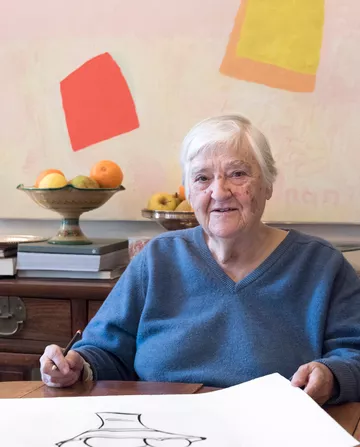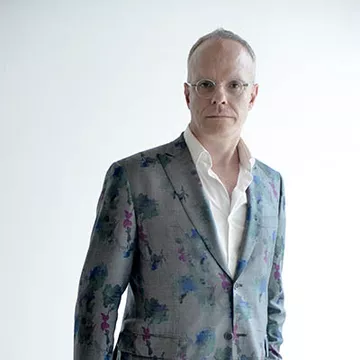A Leporello, several notebooks and watercolour drawings exhibited in Dubai in 2007 catalysed Hans-Ulrich Obrist’s long-term collaboration and friendship with the late Etel Adnan, one of the greatest poets and artists of our time. Obrist was magnetically drawn to the cosmic energy of her work and obsessively collected every publication he found. The first he read was Sitt Marie Rose (The Post-Apollo Press, 1977), her magnum opus on the Lebanese Civil War, which established Adnan as a significant political writer and one of the preeminent voices of feminist and peace movements.
Seeing her work then evoked in Obrist a similar feeling to discovering Paul Klee’s work as a teenager. Like Klee, Adnan was a polymath. Her practice could be linked to superstring theory; a Gesamtkunstwerk that has many dimensions and expands the notion of single disciplines: cartographies, drawings, films, notebooks, novels, paintings, plays, poems, political journalism, sculptures, tapestries, and teaching.
Born in Beirut in 1925, Adnan studied at Sorbonne and Harvard, after which she taught philosophy at the University and started painting in the late 1950s in California. There, she fell in love with her life partner Simone Fattal as well as a mountain, Mount Tamalpais, at the foot of which they lived. Her passion led to numerous paintings and the book Journey to Mount Tamalpaïs (The Post-Apollo Press, 1986). Often stemming from a red square, her canvases are abstract compositions with flat colours directly applied from the tubes. She was interested in the immediate beauty of colour. As Simone Fattal explains, her paintings both ‘exude energy and give energy. They shield you like talismans.’
Her unrealised project of becoming an architect can be compared to how she approached painting as something that is built. Adnan understood painting as addressing itself to the outside world and architecture as inescapable, something that is always already there and made for us to be. As she said, ‘the first architecture for a human being is their mother’s womb.’
It was under heavy rain, during the winter of 2012, that Etel Adnan, Simone Fattal, Koo Jeong A, and Hans-Ulrich Obrist found refuge in a café in Brittany. Throughout long conversations, Adnan was writing poems on a notepad. It became evident to Obrist that it’s important to celebrate handwriting as opposed to the lamentation of its disappearing. Since then, he posts handwritten notes of the people he meets on Instagram once a day.
After a first chapter dedicated to Édouard Glissant, the second chapter of Hans-Ulrich Obrist’s archive focuses on the myriad of conversations with Etel Adnan from 2009 until her last days in 2021, offering fifteen hours of unreleased interviews, tracing their relation through hundreds of published documents, post-it notes, handwritten correspondences, and artworks. Their connection was one of mutual respect and, above all, wholehearted admiration. They shared numberless projects; she was a regular participant of the Marathon conversations, organised yearly by Obrist at the Serpentine, London; he devoted two major solo exhibitions to her practice and published multiple monographs. Adnan is an essential figure for LUMA in Arles, a project Hans-Ulrich Obrist has accompanied since its inception. Maja Hoffmann, founder of Luma, remembers: ‘Etel once told me, what we are doing with LUMA is creating a lighthouse for the Mediterranean. If LUMA is the lighthouse, then Etel is certainly the fire, the fire that lights up the space and shows directions.’


